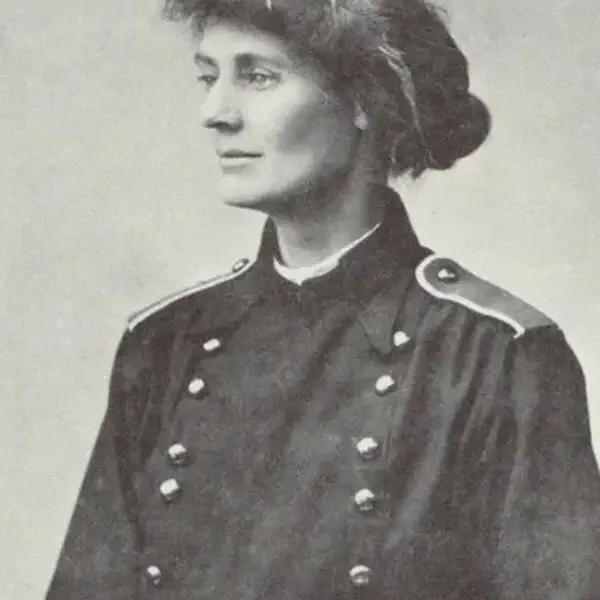
Countess Constance De Markievicz, Dies
July 15, 1927
Constance, Countess Markiewicz (4 February 1868 - 15 July 1927), was an Irish politician, nationalist and revolutionary.
Born Constance Georgine Gore-Booth in Buckingham Gate, London, the elder daughter of baronet and explorer, Sir Henry Gore-Booth, she lived as a child at the Anglo-Irish family’s ancestral home, Lissadell House in County Sligo in the north west of Ireland.
Constance and her younger sister, Eva Gore-Booth, were close friends of the Anglo-Irish poet, W. B. Yeats, who frequently visited the house, and were influenced by his artistic and political ideas.
Constance studied art at the Slade School in London and then in Paris, where in 1893 she met and married Polish-Ukrainian artist, Count Casimir Dunin-Markiewicz.
They settled in Dublin, Ireland in 1903, where she became involved in radical politics through the suffragette movement and in the Irish nationalist movement, joining Sinn Féin in 1908, and founding the militant nationalist boy scouting movement Fianna Éireann in 1909.
In 1913, her husband moved to the Ukraine (possibly because of his wifes activities), and never returned. Shortly thereafter she joined James Connollys Irish Citizen Army (ICA), and, though a member of the landed gentry, she devoted herself to the cause of socialism.
As a member of the ICA she took part in the 1916 Easter Rising, shooting a British sniper at one point, and was sentenced to death by the British government.
The sentence was commuted to life imprisonment due to her gender, and she was released under the amnesty of 1917.
In the December 1918 general election, Markiewicz was elected for the constituency of Dublin St Patricks as one of 73 Sinn Féin MPs. This made her the first woman elected to the British House of Commons. However, in line with Sinn Féin policy, she refused to take her seat.
Instead Countess Markiewicz joined her colleagues assembled in Dublin as the first incarnation of Dáil Éireann, the unilaterally-declared Parliament of the Irish Republic. She was re-elected to the Second Dáil in the House of Commons of Southern Ireland elections of 1921. She also converted to Roman Catholicism some time after the Easter Rising.
Markiewicz served in as Minister for Labour from April 1919 to January 1922, in the Second Ministry and the Third Ministry of the Dáil. Holding cabinet rank from April to August 1919, she became the first Irish female Cabinet Minister. She was the only female cabinet minister in Irish history until 1979 when Máire Geoghegan-Quinn was appointed to the then junior cabinet post of Minster for the Gaeltacht for Fianna Fáil.
Markiewicz left government in January 1922 along with Eamon de Valera and others in opposition to the Anglo-Irish Treaty. She fought actively for the Republican cause in the Irish Civil War, and joined Fianna Fáil on its foundation in 1926. She was not elected in the Irish general election of 1922 but was returned in the 1923 election for the Dublin South constitency. In common with other Republican candidates, she did not take her seat.
In the June 1927 election, she was re-elected to the 5th Dáil as a candidate for the new Fianna Fáil party, which was pledged to return to Dáil Éireann, but died only five weeks later, before taking her seat.
She died at the age of 59, on 15 July 1927, after a short illness, and is buried in Glasnevin Cemetery, Dublin, Ireland.
The by-election for her Dáil seat in Dublin South was held on 24th August and won by the Cumann na nGaedhael candidate Thomas Hennessy.